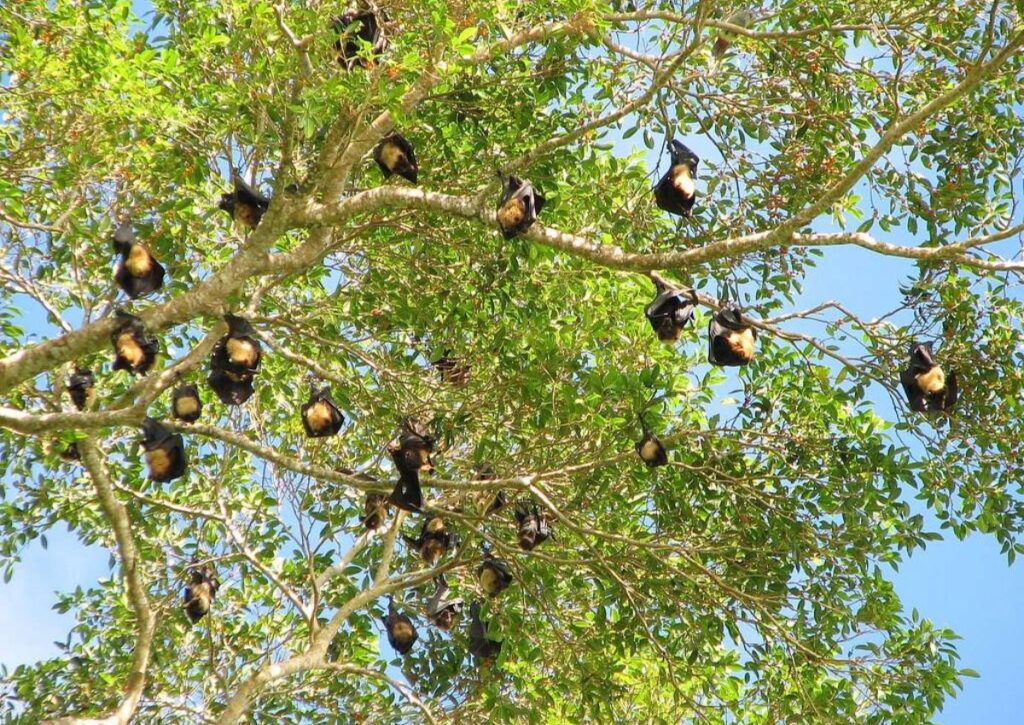Explore 14 amazing animals in Samoa National Park from fruit bats to reef sharks on our hiking adventures!
Get ready to meet the wild locals of Samoa National Park, where every hike is an episode of our own tropical wildlife series!
Forget the usual walks through the park; here, you’re the special guest in a world where Samoan fruit bats rule the skies and reef sharks patrol the seas.
We’ve trekked through this lush paradise, from dense rainforests to deep blue lagoons, and the cast of characters we’ve encountered could star in their own nature documentary.
From the aerial acrobatics of Pacific pigeons to the ground-skimming grace of Polynesian ground doves and the camouflage masters like the banded iguana, each step brings a new surprise.
So, slather on some sunscreen and let’s hit the trails — there’s a Samoan moorhen waiting to make your acquaintance, and we’ve got the inside scoop on Samoa’s animal kingdom!
Samoa National Park – Animals We Saw
The park is a sanctuary where one can encounter the Pacific pigeon, the Samoan flying fox, and the rare tooth-billed pigeon, among other magnificent species.
But it’s not just about experiencing the thrill of spotting these creatures in their natural habitat.
It’s also about understanding their integral role in maintaining the health of our ecosystems.
Lets dive into what we saw:
Samoan Fruit Bats
Experiencing the thrilling sight of Samoan Fruit Bats (Pteropus samoensis) in their natural habitat is a highlight of any visit to Samoa National Park.
These nocturnal wonders, also known as flying foxes due to their fox-like faces, are not just unique to Samoa but are also a symbol of the country’s rich biodiversity.
These bats can often be seen during the dusk and dawn hours, flying in a captivating spectacle across the sky in search of fruit.
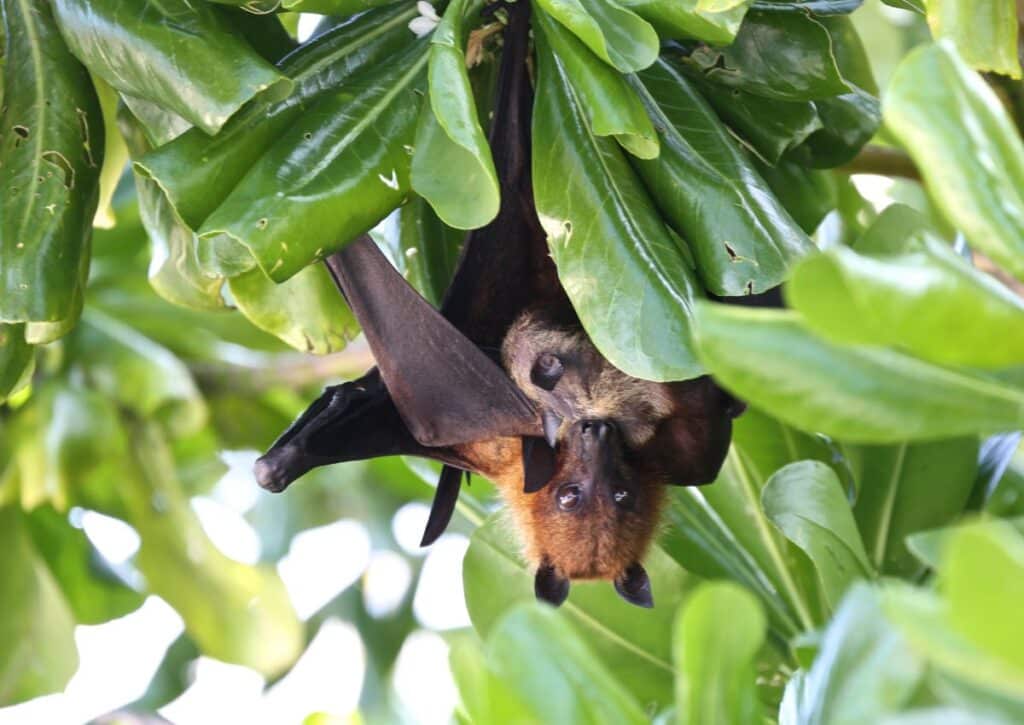
The best place to see these magnificent creatures is in the lush rainforests of the park, where they roost in the canopies of tall trees during the day. These forests provide them with an abundance of native fruit trees like breadfruit and figs, which form their primary diet.
Experiencing the bats’ flight in the serene twilight hours, amidst the verdant surroundings of Samoa National Park, is a mesmerizing sight.
It’s a striking testament to the richness of Samoan wildlife and the successful conservation efforts of the park.
This spectacle serves as a profound reminder of the importance of maintaining the delicate balance of our ecosystems.
Pacific Pigeons
The Pacific Pigeons (Ducula pacifica), also known as the Pacific Imperial Pigeon, are a fascinating sight in the Samoa National Park.
Renowned for their size, they are larger than typical pigeons, boasting a sleek grey body with a white belly and an impressive wingspan.
These birds are mostly found in the dense rainforests of the park, where they seek refuge in the tall trees’ canopies. If you’re keen to spot them, the best place to visit is the forested trails of the park in the early mornings or late afternoons, when they are most active.
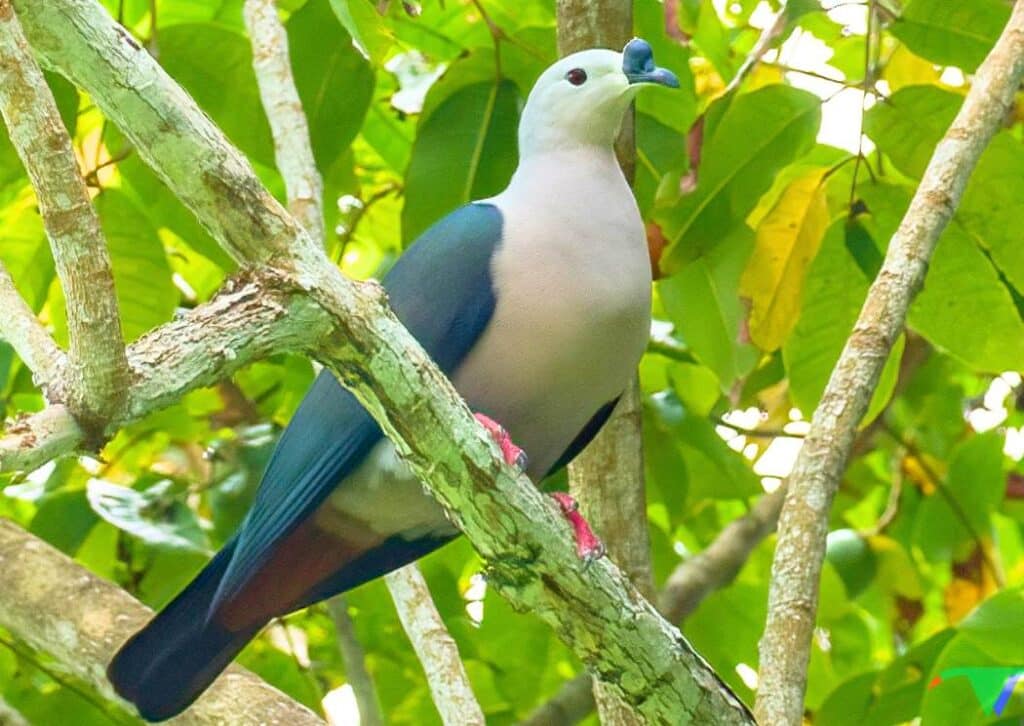
Witnessing the flight of Pacific Pigeons in their natural environment is a splendid spectacle that testifies to the diverse fauna that calls Samoa National Park home.
It’s a testament to the park’s successful conservation efforts and the harmony that exists between the animals and their environment.
Brown Noddies
The Brown Noddies (Anous stolidus) add a distinct charm to Samoa National Park. These medium-sized seabirds, with their sharp beaks, sleek brown bodies, and contrasting white caps, offer a delightful sight for bird watchers and nature enthusiasts alike.
Known for their exceptional flying skills and agility, the Brown Noddies are typically found along the park’s picturesque coastline, particularly near the cliffside nesting sites.
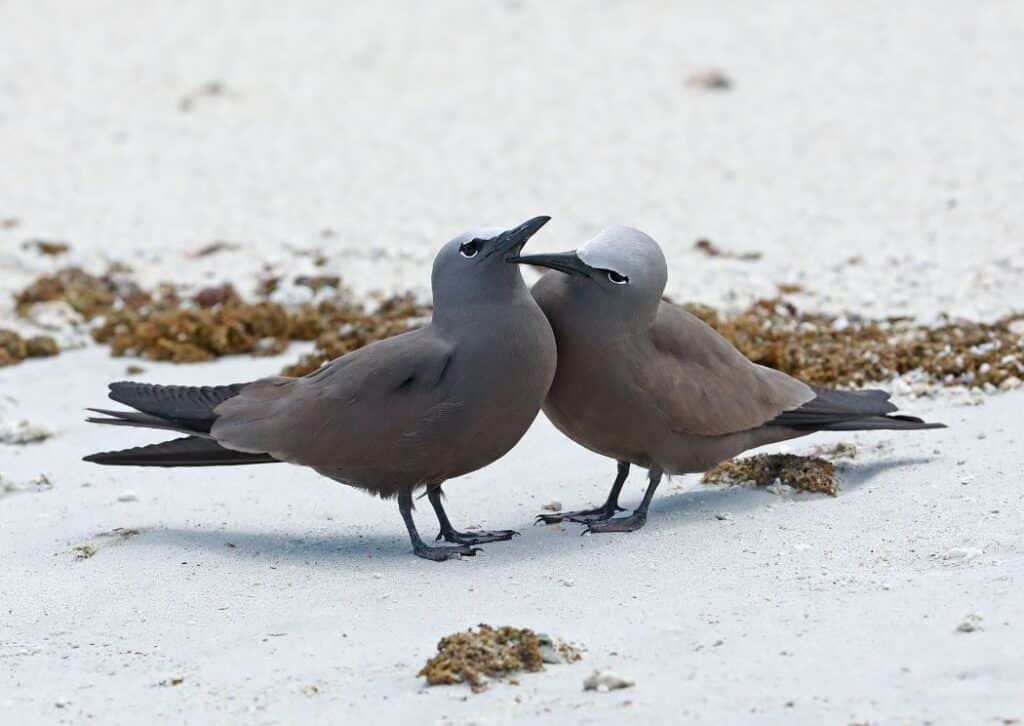
The best place to spot them is near the pristine beaches and coastal cliffs of Ofu Island, especially during the early morning and late afternoon when they return from their day-long fishing expeditions.
Watching these graceful birds soar above the shimmering blue ocean, diving skillfully to catch fish, is a truly breathtaking spectacle. It captures the essence of the rich marine biodiversity of Samoa National Park and adds a unique flair to the overall wildlife experience.
Polynesian Ground Doves
Polynesian Ground Doves (Alopecoenas erythropterus), also known as the Friendly Ground-Dove, are a unique and rare sight in the Samoa National Park.
These small, timid birds, characterized by their attractive grey-blue bodies and distinctive red legs and feet, offer an enchanting sight to keen birdwatchers.
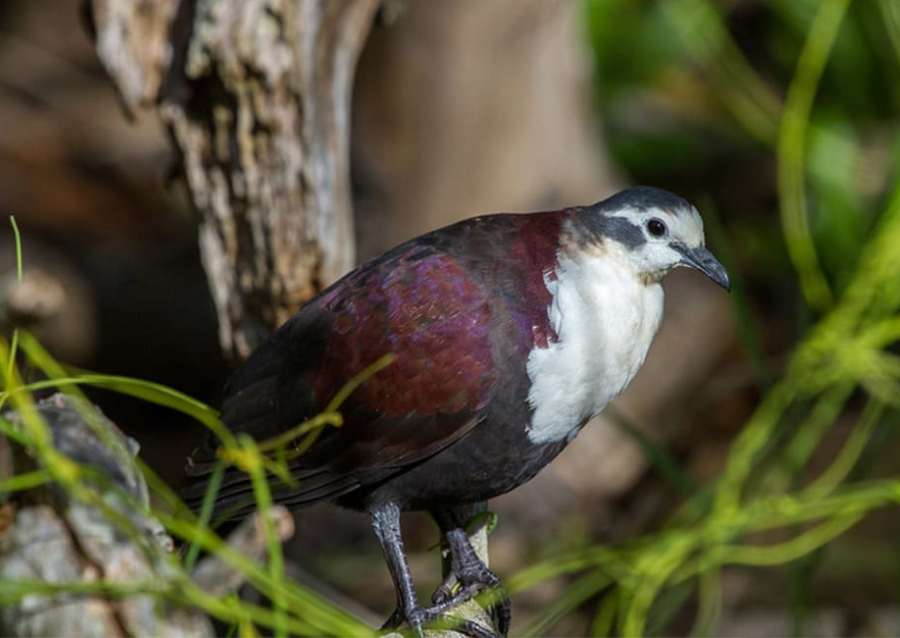
Due to their ground-dwelling nature, the Polynesian Ground Doves are typically found in the lowland forests and shrubby areas of the park.
The best place to spot them is along the quiet forest trails, particularly in the early mornings and late afternoons when they forage for seeds and small insects.
Observing these endearing birds, with their unique coloration and behavior, is a treat for any nature lover. Their presence in Samoa National Park adds to the richness of the park’s avifauna, signifying the importance of the park in conserving rare and endangered species.
Red-footed Booby (Sula sula)
The Red-footed Booby (Sula sula) is one of the most enchanting inhabitants of Samoa National Park. Adorned with bright white plumage and vivid red feet, these seabirds are the smallest of all boobys yet stand out with their distinctive coloring.
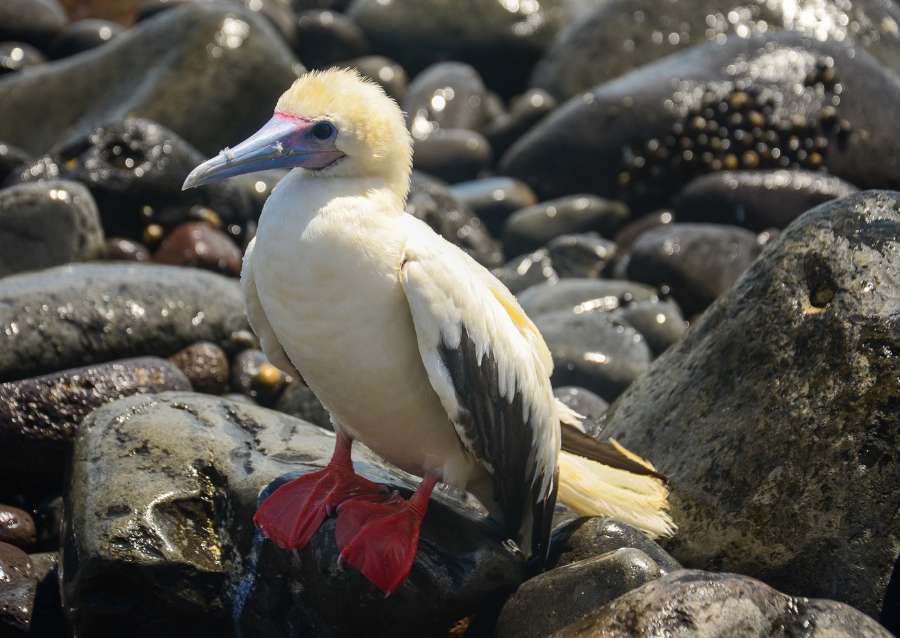
They prefer the coastal areas, especially the towering cliffs and rocky islands. An exceptional time to observe them is during the late afternoon when they return from their forays into the ocean.
Watching these birds take audacious dives into the azure waters for their catch is a breathtaking sight that showcases the park’s vibrant birdlife and the richness of its marine ecosystems.
Reef Sharks
Reef Sharks are a fascinating part of the underwater world in Samoa National Park. Observing these graceful predators gliding through the crystal-clear waters is a thrilling experience.
The marine reserves of the park, known for their vibrant coral reefs, are the best places to spot these sharks. Early morning and late afternoon snorkeling sessions offer the best opportunities to observe these sharks as they hunt.
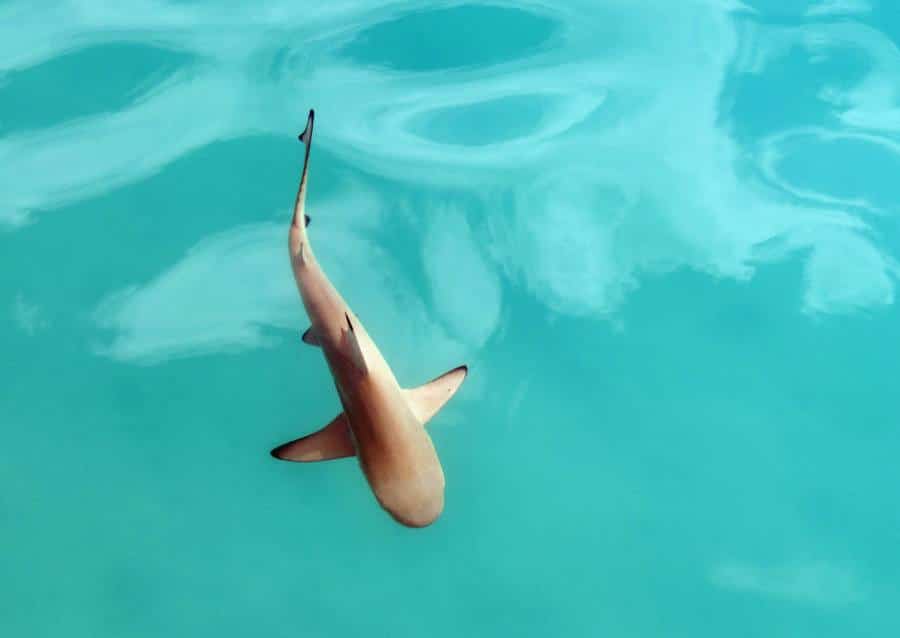
Their presence is a testament to the health of the park’s marine ecosystems and adds a touch of excitement to the underwater exploration of Samoa National Park.
Samoan Flying Foxes
Samoan Flying Foxes, also known as Samoan Fruit Bats, offer an enthralling sight in Samoa National Park. These large bats, with their fox-like faces, spend their days roosting in the towering rainforest canopies.
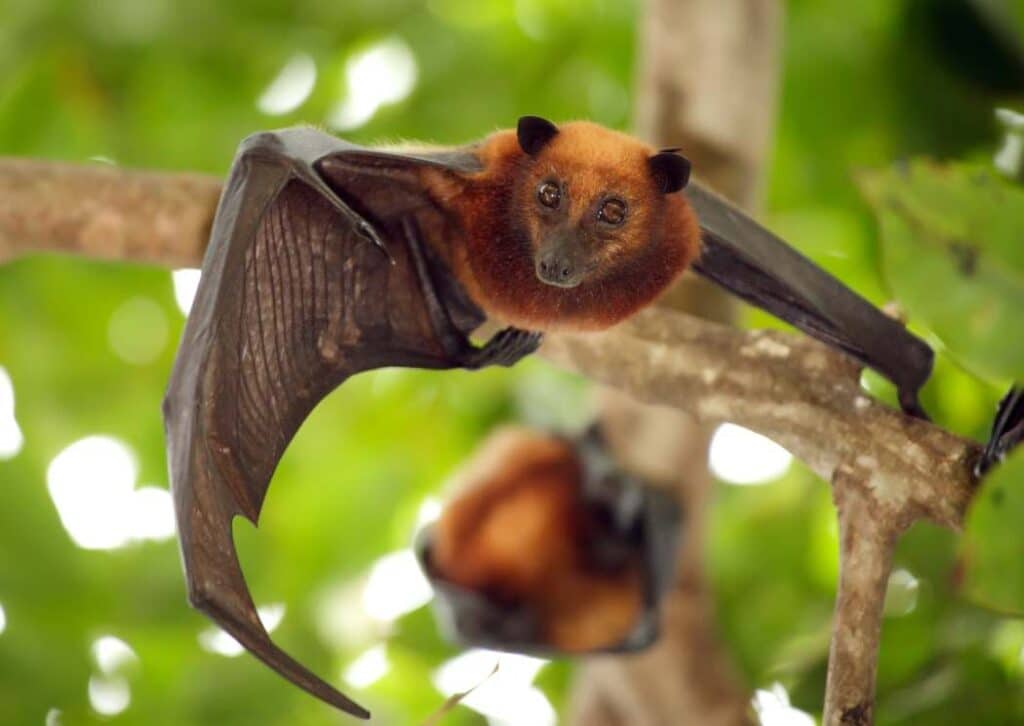
As the sun sets, they take flight in search of fruit, their main diet. The rainforest areas of the park offer the best chances to see these creatures, especially during the twilight hours.
Watching them take to the skies in their search for food is a mesmerizing spectacle that highlights the park’s unique fauna and the richness of its rainforest ecosystems.
Samoan Whistler
The Samoan Whistler (Pachycephala flavifrons) is a captivating bird species that is native to Samoa. Its vibrant yellow belly, contrasting with its gray or olive-green upperparts, makes it a delightful sight for any bird enthusiast.
But it is perhaps most known for its melodious, whistling song, from which it derives its name, that beautifully echoes in the tranquil surroundings of the park.
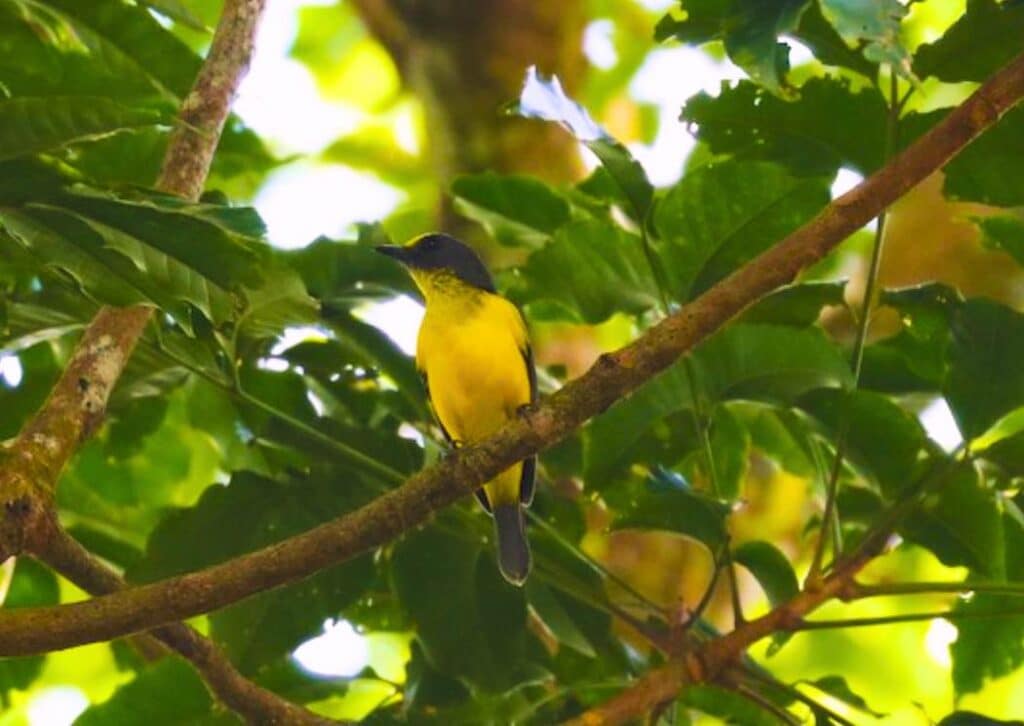
The ideal habitat for these songbirds is the lush, verdant rainforests of Samoa National Park, where they are primarily seen in the tree canopies. Early morning or late afternoon strolls along the quieter forest trails of the park provide the best opportunity to spot and hear these enchanting birds.
Rare and Fascinating Creatures of Samoa National Park
In the verdant cradle of Samoa National Park, a myriad of life forms thrive in harmony. Among them, several rare and exceptional species beckon the curious eyes of nature enthusiasts.
These fascinating creatures, some seen nowhere else in the world, are a testament to the park’s rich biodiversity. Let’s step into their world and uncover their unique allure.
Tooth-billed Pigeon or Manumea (Didunculus strigirostris)
As we venture into the heart of the lush rainforests of Samoa National Park, we encounter the enigmatic Tooth-billed Pigeon, also known as Manumea.
This elusive bird, endemic to Samoa, has been aptly dubbed as the ‘little dodo’ due to its resemblance to the extinct dodo bird.
Its unusual tooth-like bill is a distinctive feature that sets it apart from other pigeons. The Manumea prefers the solitude of the higher altitude forests, making a sighting a rare and rewarding experience.
These birds, despite their elusive nature, are integral to the health of Samoa’s ecosystems as they aid in seed dispersal, playing a significant role in the regeneration of the forest.
Myna Bird
The Myna Bird is another feathered inhabitant of the park. It stands out with its bright yellow eye patches, contrasting with its glossy black plumage.
This bird, known for its adaptability and intelligence, is most often seen in open areas near human settlements and along the forest edges.
Mynas are known for their diverse vocal range and are often seen in pairs. Observing their social behavior and listening to their wide array of calls offers a unique birdwatching experience.
Tongan Ground Skink
In the undergrowth of the park’s forests, a keen observer might spot the Tongan Ground Skink. This reptile, identifiable by its sleek, elongated body and a glossy brown or black color, is one of the largest skinks in the world.
Active mostly during the day, these skinks are found in various habitats, from coastal areas to forests. Their role in controlling insect populations underlines their importance in maintaining the balance of the park’s ecosystems.
Banded Iguana
Another interesting reptile found in Samoa National Park is the Banded Iguana. This strikingly colored reptile, with its vibrant green body and distinct black or blue bands, is a sight to behold.
Preferring the humid, dense forests of the park, they are excellent climbers, spending most of their time in the tree canopies.
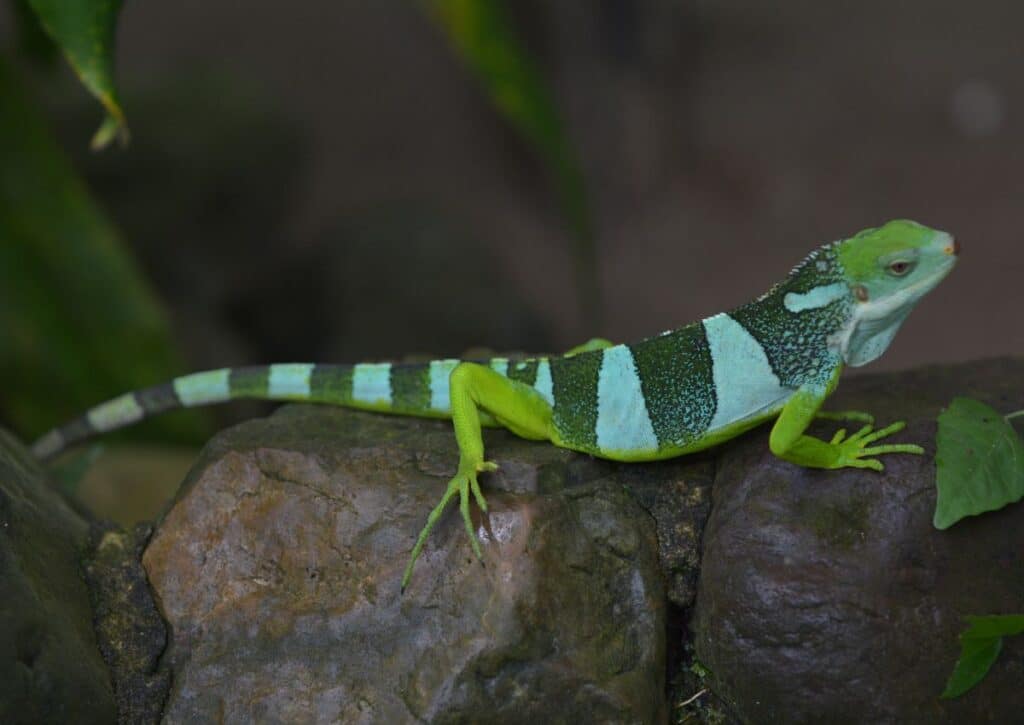
Seeing a Banded Iguana basking in the sun or deftly navigating through the forest canopy offers a glimpse into the diversity of reptile life in the park.
Samoan Moorhen (Gallinula pacifica)
The Samoan Moorhen, an elusive bird species, is believed to be extinct by many but reported sightings in Samoa National Park spark hope for its survival.
With its dark plumage, contrasting white undertail, and distinctive red bill and shield, the Samoan Moorhen is a captivating sight. It inhabits the montane forests and wetlands of the park.
Sightings of these rare birds serve as a reminder of the crucial role that the park plays in conserving and protecting endangered species.
Giant Clams
Venturing from land to water, the Giant Clams found in the park’s marine reserves are an underwater marvel.
These massive mollusks, some growing up to 1.5 meters, are known for their vibrant, iridescent interior.
They play a crucial role in the marine ecosystem, filtering water and providing habitat for various small organisms.
Snorkeling near the coral reefs of the marine reserves offers the best chance to spot these clams.
Observing them in their natural habitat is a mesmerizing experience, highlighting the rich marine biodiversity in Samoa National Park.
10 Interesting facts about the Samoa National Park
Samoa National Park covers three of the islands in the Samoan archipelago, namely Tutuila, Ofu, and Ta‘ū.
Established in 1988, the park spreads over an area of 13,500 acres, encompassing diverse ecosystems from rainforests and beaches to coral reefs.
The park is home to more than 900 species of fish and over 200 types of coral, making it a paradise for marine life enthusiasts.
Samoa National Park hosts a remarkable number of endemic species. A significant example is the Samoan Flying Fox or fruit bat, which is one of the largest bat species in the world.
The park features archaeological sites dating back more than 3,000 years, offering a glimpse into the region’s prehistoric human habitation.
Within the park’s boundaries, there are traditional Samoan villages, where local customs and lifestyle continue to be practiced, providing visitors an insight into the Samoan culture.
Samoa National Park is an Important Bird Area (IBA), as designated by BirdLife International, and provides habitat for numerous bird species, including the critically endangered Tooth-billed Pigeon or Manumea.
The park’s coral reefs are part of the larger Fagatele Bay National Marine Sanctuary, which is a protected marine environment known for its spectacular marine biodiversity.
Samoa National Park plays a significant role in climate regulation. Its forests are major carbon sinks, while its coral reefs act as natural barriers against sea-level rise.
The park is known for its stunning natural beauty, with highlights including the pristine Ofu Beach, the dramatic cliffs of Vai’ava Strait, and the lush Mount Alava rainforest.
Conclusion
Our exploration of Samoa National Park revealed a fascinating array of rare and unique species, from the elusive Tooth-billed Pigeon to the massive Giant Clams.
We’ve marveled at the intelligence of Myna Birds, the grandeur of Tongan Ground Skinks, and the striking beauty of Banded Iguanas.
This diverse ecosystem underscores the park’s immense biodiversity and conservation significance.
Our journey through the park is a testament to the stunning wildlife that coexists on our planet, highlighting the need for continued conservation efforts.

